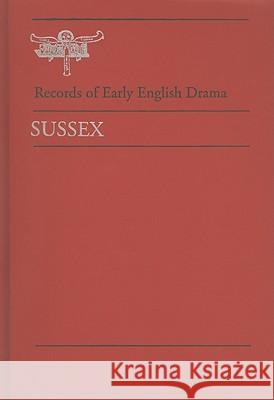Sussex » książka
Sussex
ISBN-13: 9780802048493 / Angielski / Twarda / 2000 / 400 str.
"Sussex" is a complete edition of primary sources concerning dramatic and musical performance in the county of Sussex from the Middle Ages until the time of Oliver Cromwell. As with all Records of Early English Drama (REED) volumes, Sussex contains introductory material situating the primary sources in context, as well as the primary sources themselves. Documenting the performance of drama and music in the county of Sussex up to 1642, this volume includes an extensive introduction, explanatory notes, glossaries, translations, and indexes.Although many of the civic records of Sussex have not survived, an impressive set of documents from the important Port of Rye dating back to the late Middle Ages still exists. The records from Rye reveal a period of intensive dramatic activity by local and visiting players, resulting in abrupt termination when hostile religious factions gained control of the town government. We also have some records that reveal musical and dramatic performance in heavily populated locations like Chichester and Lewes. Other records such as parish accounts and ecclesiastical court proceedings show performance and folk rituals in both small and large settlements, including a detailed account of a Robin Hood play, an another of a cowlstaff riding. The book also includes records of performance at the religious houses of Battle and Robertsbridge, and the printed accounts of the entertainment of Queen Elizabeth at Cowdray House. This ambitious text complements the previous REED volumes and helps complete the picture of performance in the areas outside of London and in the Southern counties. Geographical and historical sketches of the county are included, with particular emphasis on landscape, economic development, major settlements, administrative structure, religious conflicts, networks of nobility and gentry, religious houses, and transportation infrastructure. Professor Louis also visits the subject of travelling players and performance spaces, as well as folk customs. The records themselves are transcribed and edited, with accompanying explanatory notes.











